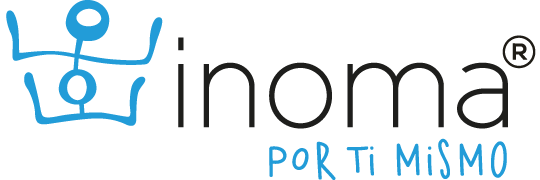
The 21st century has brought with it a wave of incredible changes and constant updating in relation to technology. It is therefore important to try to integrate these new technologies into education, so that the new generations have the skills and competencies that the future needs. However, it has been complicated to implement these new digital tools, since there is a big gap between educational plans and the use of IT in schools.
A survey carried out in the United States of K-12 teachers from different types of schools, with a greater participation of public schools representing 85% of the results of this study, with a total population of 1,208 people and having women as the main sector of the population (87%), establishes that, according to the teachers, the technological tools for learning are quite effective in being able to develop new skills and knowledge. Likewise, they stressed that the videos are the best edtech in the classroom as they are a good complement to the different topics covered during the day. (Vega, V., & Robb, M.,2019)
On the other hand, the use of IT in classrooms is usually very rare, as only 8 out of 10 teachers have a computer in their classroom. In addition, 3 out of 10 teachers share devices with at least 5 of their students per device. This has resulted in students having to bring their own technological devices from home, for example mobile phones, tablets or computers. (Vega, V., & Robb, M., 2019)
One of the problems in being able to use technological tools or devices is that 43% of teachers with 21 years or more of teaching experience do not usually leave a task or activity that requires their use, and this is probably due to a lack of knowledge in handling these new technologies.
Despite the fact that the world is constantly changing and evolving, it seems that education is lagging behind more and more and various factors such as insufficient equipment in schools or lack of knowledge about how they work play a decisive role.
Ang how is the reality in our country?
In Mexico, children and young people in basic education do not have the technological resources to enhance their learning through IT, either at home or in their school facilities.
According to a study by Coneval on the “Right to Education” and the report on “Compulsory Education in Mexico”, students who have computers, 13 per cent use them in preschool, 36 per cent in primary school and 58 per cent in secondary school. On the other hand, the percentage of computer classrooms available to students nationwide is 71%.
These data show that despite the existence of computer equipment in several schools, they do not always occupy the equipment.
In the case of Internet connectivity, 70% of schools have this service.
However, in rural Mexican schools, the picture is even more discouraging, as they have less than 6% use of internet connectivity at the preschool level; in the case of primary schools, connectivity is reduced to 10%.
Inequality and marginalization with respect to digital resources create a barrier between children’s education and their optimal learning.
Pedagogical planning and digital planning
Technological progress cannot be ignored in education, so it is necessary to adapt and update to avoid further lagging behind in terms of knowledge and use of new technological devices and tools.
Today, there are several websites, both free of charge and paid, in which they offer tools that help teachers or educators to carry out their pedagogical planning, facilitating this task that can be tedious, there are even some pages that provide them with didactic resources and ideas to improve learning and school performance.
In the United States 52% of teachers who used digital media for their planning mentioned that it was really effective and as a result students could feel safe, smarter and knew how to make the right ethical decisions. Likewise, this content helps teachers when they have groups with a great population diversity, that is, with people of different ethnicities.
In order for you to start getting into these new sites that you can easily work with and improve your students’ learning, we recommend a very simple, dynamic and free site for your classes.
LabTak
LabTak is a site developed by Inoma, a nonprofit organization that has worked to support the most vulnerable children and young people. On the website, once you have registered, you will be able to find content related to subjects such as Spanish, Mathematics, History, Science, Civic and Ethical Education and Art Education.
Within each area, you will be able to view educational TAK-TAK-TAK video games that may be suitable for your class. In addition, it includes a description of the game, the skills to be developed and the concepts to be worked on. You will also be able to read interesting articles and research that can help you provide quality teaching.
With this platform you won’t have to worry about whether the information presented is suitable for your students, since all the material is aligned with SEP’s (Mexican Ministry of Education) educational programs, and each level is adapted to the level of preparation that the students have.
Sources:
Vega, V., & Robb, M. (2019). The Common Sense Census: Inside the 21st-Century Classroom [Ebook]. Common Sense. Retrieved from https://www.commonsensemedia.org/research/the-common-sense-census-inside-the-21st-century-classroom-2019
Bracho González, T., Miranda López, F., Figueroa Palafox, H., Núñez Barbosa, M., & Gutiérrez Córtés, M. (2019). La Educación Obligatoria en México Informe 2019 [Ebook] (1st ed.). Ciudad de México: Instituto Nacional para la Evaluación de la Educación. Retrieved from https://www.inee.edu.mx/publicaciones/la-educacion-obligatoria-en-mexico-informe-2019/
Cárdenas Elizalde, M., Cortés Cáceres, F., Escobar Latapí, A., Nahmad Sittón, S., Scott Andretta, J., & Teruel Belismelis, G. (2018). Estudio Diagnóstico del Derecho a la Educación 2018 [Ebook] (1st ed.). Ciudad de México: Consejo Nacional de Evaluación de la Política de Desarrollo Social. Retrieved from https://www.coneval.org.mx/Evaluacion/IEPSM/Documents/Derechos_Sociales/Estudio_Diag_Edu_2018.pdf















